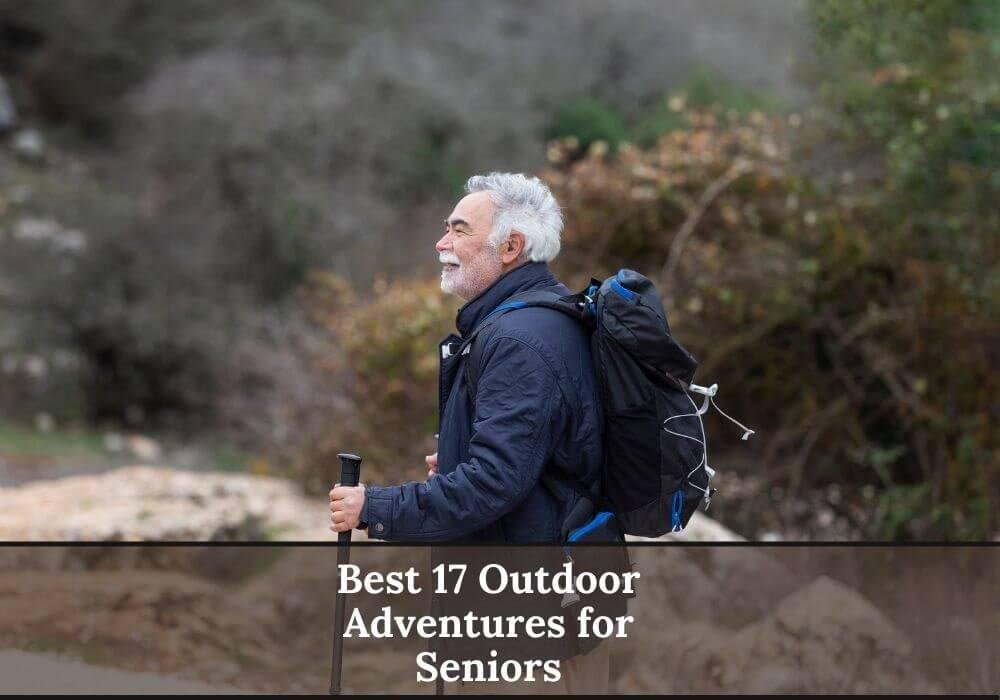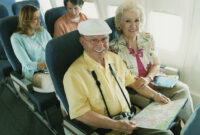Tours for single seniors represent a burgeoning sector of the travel industry, catering to the growing population of active and adventurous older adults who desire enriching experiences without the constraints of traveling with a partner. This guide explores the diverse options available, from relaxing cruises to exhilarating adventure tours, ensuring a tailored experience for every preference and physical ability. We’ll delve into destinations, tour operators, safety considerations, and budget-friendly strategies, empowering single seniors to embark on unforgettable journeys.
This exploration encompasses a wide range of factors crucial for planning a successful and fulfilling trip. We’ll cover various tour types, matching them with suitable activity levels and highlighting unique features appealing to solo travelers. We will also provide guidance on choosing safe and accessible destinations, reliable tour operators, and cost-effective strategies to manage expenses without sacrificing quality. Ultimately, the aim is to empower single seniors to confidently plan and enjoy their well-deserved adventures.
Social and Community Aspects
Traveling solo can sometimes feel isolating, but for single seniors, joining a group tour offers a unique opportunity to combat loneliness and build meaningful connections. These tours provide a built-in social network, allowing individuals to share experiences, forge friendships, and create lasting memories with like-minded companions.
Group tours for single seniors offer a readily available social circle, minimizing the feeling of isolation often associated with independent travel. The shared experiences, from sightseeing to dining, create natural opportunities for conversation and bonding. Furthermore, the structured itinerary reduces the pressure of planning and allows participants to focus on socializing and enjoying the journey.
Facilitating Social Interaction Through Tour Design
Tour operators can significantly enhance the social aspect of their trips through thoughtful itinerary planning. Activities should be designed to encourage interaction and shared experiences. For instance, instead of independent free time, incorporating group meals, cooking classes, or even guided walking tours promotes casual conversations and collaborative activities. The inclusion of optional excursions that cater to different interests also allows individuals to connect with others who share similar passions. Consider a tour featuring both a wine tasting and a historical walking tour – this variety appeals to a wider range of interests and encourages interaction amongst diverse personalities. Evenings could feature informal gatherings, perhaps with games or a communal space to facilitate easy mingling.
Creating a Sense of Community Among Participants
A strong sense of community can be cultivated through pre-tour communication and well-structured group activities. Pre-trip newsletters or online forums can introduce participants to one another, allowing them to connect before the journey even begins. During the tour, icebreaker activities at the start and designated social events throughout the trip can further facilitate bonding. Consider a welcome dinner with assigned seating to encourage initial conversations, or a themed party that encourages participants to dress up and engage in lighthearted competition. Furthermore, employing experienced and engaging tour guides who actively encourage interaction amongst the group members can be crucial in fostering a welcoming and inclusive atmosphere. The tour guide can act as a facilitator, subtly introducing people with shared interests and creating opportunities for spontaneous interactions.
Examples of Socially Engaging Tour Itineraries
A successful tour itinerary for single seniors might include a combination of structured activities and free time, balancing social interaction with personal exploration. For example, a week-long tour of Italy could include guided tours of major cities like Rome and Florence, interspersed with free afternoons for independent shopping or museum visits. However, the itinerary should also include group cooking classes, wine tasting sessions, and optional excursions such as hiking or cycling tours to encourage shared experiences and bonding. Evenings could feature communal dinners or informal gatherings at the hotel, providing opportunities for casual conversation and relaxation. The careful balance between structured activities and free time is crucial; it allows participants to both engage in shared experiences and maintain a sense of personal autonomy.
Budgeting and Cost Considerations
Planning a trip, especially as a single senior, requires careful budgeting to ensure a fulfilling and financially responsible experience. Understanding your spending habits and anticipating potential costs is crucial for a stress-free journey. This section will guide you through creating a realistic budget and identifying opportunities to save money without sacrificing comfort.
Creating a realistic budget involves a detailed breakdown of anticipated expenses. Begin by identifying your must-haves versus your wants. Prioritize essential costs such as flights and accommodation, then allocate funds for activities and meals based on your preferences and available resources. Remember to include a buffer for unexpected expenses, as these can significantly impact your overall budget.
Budget Breakdown and Expense Categories
To create a comprehensive budget, consider the following expense categories:
- Flights: Compare prices across different airlines and booking platforms. Consider flying during the off-season or on weekdays for potentially lower fares. Budgeting for baggage fees is also important.
- Accommodation: Explore various options like hotels, guesthouses, or vacation rentals. Consider location and amenities when choosing your accommodation. Websites dedicated to senior travel often provide discounts or special offers.
- Activities: Research potential activities and attractions beforehand. Look for free or low-cost options like walking tours, visiting parks, or exploring local markets. Many museums offer senior discounts.
- Meals: Plan your meals strategically. Consider packing some snacks and drinks to avoid expensive impulse purchases. Look for local eateries and restaurants offering affordable lunch specials or happy hour deals.
- Transportation: Factor in ground transportation costs, including taxis, buses, or rental cars. Public transportation is often a cost-effective option, especially in larger cities.
- Miscellaneous Expenses: Set aside a contingency fund for unexpected expenses such as medical emergencies, lost luggage, or unforeseen travel delays. A reasonable amount would be 10-15% of your total estimated budget.
Affordable Travel Options
Finding affordable travel options doesn’t mean compromising on quality. Consider these strategies:
- Travel during the shoulder season: Traveling during the off-peak seasons (spring and autumn) often results in lower prices for flights and accommodation compared to peak seasons.
- Utilize senior discounts: Many airlines, hotels, and attractions offer discounts for senior travelers. Don’t hesitate to inquire about these discounts when booking.
- Consider package deals: Travel packages often offer bundled discounts on flights, accommodation, and activities, potentially saving you money compared to booking each component separately.
- Explore alternative accommodation: Consider staying in guesthouses, bed and breakfasts, or vacation rentals instead of hotels, which can often be more budget-friendly.
- Take advantage of free activities: Many cities offer free attractions, such as parks, walking tours, and museums on certain days. Planning your itinerary around these free options can significantly reduce your expenses.
Cost-Saving Strategies for Single Senior Travelers
Traveling solo can sometimes present unique budgeting challenges. Here are some cost-saving strategies specifically for single seniors:
- Travel with a friend or family member: Sharing costs with a travel companion can significantly reduce expenses on accommodation and transportation.
- Look for senior-specific travel deals: Many travel agencies and organizations specialize in catering to senior travelers and offer discounted packages or group tours.
- Embrace slow travel: Spending more time in fewer locations can reduce transportation costs and allow you to fully immerse yourself in the local culture.
- Cook some of your own meals: If staying in accommodation with kitchen facilities, preparing some of your own meals can save money on dining out.
- Utilize loyalty programs: Take advantage of airline and hotel loyalty programs to earn points or miles that can be redeemed for future travel discounts.
Pre-Trip Planning and Preparation
Planning a tour for a single senior traveler requires meticulous attention to detail to ensure a smooth and enjoyable experience. This involves careful consideration of the destination, travel arrangements, and personal needs, all while prioritizing safety and comfort. The process can be broken down into several key steps to minimize stress and maximize enjoyment.
Choosing a Destination and Tour Type
Selecting the right destination is crucial. Consider the senior traveler’s physical capabilities, interests, and desired level of activity. Destinations with accessible infrastructure, good healthcare facilities, and a manageable climate are ideal. Tour types vary widely, from escorted group tours offering comprehensive support to independent travel allowing for greater flexibility. Matching the tour type to the individual’s preferences and abilities is paramount. For example, a senior with limited mobility might prefer a cruise with readily available assistance, while an active senior might opt for a guided walking tour in a city with good public transport.
Booking Flights and Accommodation
Once the destination and tour type are decided, booking flights and accommodation follows. Consider booking flights with reputable airlines known for their senior-friendly policies and services. Direct flights minimize potential travel disruptions. Accommodation should be chosen based on accessibility needs and proximity to attractions or transportation. Options range from hotels with accessible rooms and amenities to assisted living facilities offering specialized senior care. Booking well in advance, especially during peak season, is recommended to secure the best options and prices.
Essential Documents and Packing Checklist
A comprehensive checklist of essential documents and items is vital for a smooth trip. Documents should include a valid passport or identification, visa (if required), travel insurance details, flight and accommodation confirmations, and any necessary medical records or prescriptions. Packing should prioritize comfort and practicality. Comfortable walking shoes, appropriate clothing for the climate, any necessary medical supplies, and personal toiletries are essential. A small, lightweight suitcase is recommended to avoid overpacking and facilitate easy mobility. Consider including a list of emergency contacts and relevant phone numbers.
Pre-Departure Health Considerations and Travel Insurance
Prior to departure, a consultation with the senior’s physician is advisable. This allows for review of any existing medical conditions and necessary precautions. Vaccinations and necessary medications should be addressed. Comprehensive travel insurance is essential to cover medical emergencies, trip cancellations, and lost luggage. The policy should be tailored to the specific needs and itinerary of the senior traveler. This might include provisions for medical evacuation, repatriation, and other relevant contingencies. Ensuring the policy covers pre-existing conditions is crucial.
Ending Remarks
Embarking on a tour as a single senior offers a unique blend of independence, discovery, and social connection. By carefully considering the factors discussed—from choosing the right tour type and destination to prioritizing safety and budgeting effectively—single seniors can unlock a world of travel possibilities. This guide serves as a valuable resource to navigate the planning process, ensuring a rewarding and memorable travel experience that fosters both personal growth and the formation of lasting friendships.




